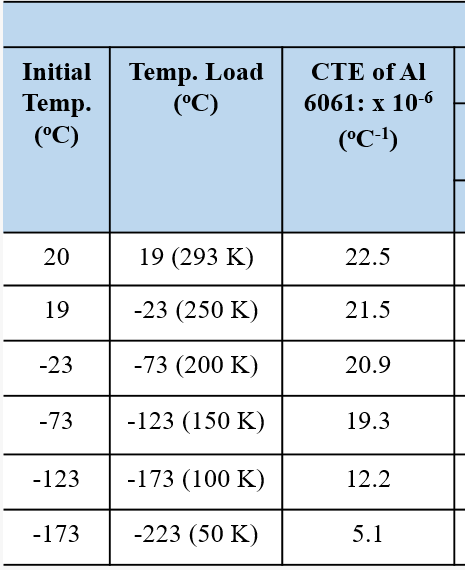-
-
August 12, 2021 at 4:23 am
Shankarbhattarai
SubscriberAugust 16, 2021 at 6:50 pmdlooman
Ansys EmployeeThe most common way to specify CTE is with a mean value going from the stress free temperature to the current model temperature. The other way is to specify the "instantaneous" coefficient of thermal expansion that exists at various temperatures. This is the method you are proposing and apparently have data for. With this method Ansys internally converts the instantaneous input to mean value input internally. You can see this if you list the CTE with MPLIST. In the end, with instantaneous input, the thermal strain at 50 degK will be based on all the CTE values going from 293 down to 50 degC, not just the 5.1 value of 50 degK. You can plot thermal strain to confirm this.
August 18, 2021 at 7:58 amShankarbhattarai
SubscriberThank you for your comment, however, I am still unable to get the total thermal strain considering the time-varying CTE values. This is because each subcase uses the global initial temperature value to calculate the temperature difference. Looking forward to your hints on it.
August 18, 2021 at 8:02 amShankarbhattarai
SubscriberMoreover, the transient analysis only gives the result with respect to time however, due to the nonlinear CTE value the result would not be accumulated. How could we deal with this issue to get the accumulated thermal strain when the initial stress-free temperature is 20 C and applied temperature load is -223 C based on the above-listed CTE values.
August 19, 2021 at 1:35 ampeteroznewman
SubscriberI recommend you read this blog to help your understanding of thermal expansion calculations in ANSYS.
https://www.padtinc.com/blog/secant-or-instantaneous-cte-understanding-thermal-expansion-modeling-ansys-mechanical/
August 19, 2021 at 2:04 amShankarbhattarai
SubscriberThank you for sharing this document.
August 19, 2021 at 2:48 amShankarbhattarai
SubscriberSo, the only option to calculate the thermal strain by taking into account all of the CTE values is to use the CTE's mean value? I read the aforementioned document, but I'm not sure how to calculate the cumulative thermal strain. Thank you.
August 22, 2021 at 11:58 pmpeteroznewman
SubscriberAfter reading the aforementioned document, I have a question for you: Is the CTE table you provided Instantaneous CTE values or are they Secant CTE values, and if they are Secant CTE values, what is the reference temperature?
If you know the table to be Instantaneous CTE values, use equation (4) in the document to convert to Secant CTE at the reference temperature of 20 C that you mentioned for the zero strain temperature.
September 25, 2021 at 10:16 pmpeteroznewman
SubscriberHere is a good paper that explains how to integrate properties that vary over a temperature range to get a secant value that can be used in a linear analysis that correctly computes the thermal strain that has developed going from one temperature to another.
When you say SOL106, you are saying you are using Nastran. I use Nastran as well as Ansys. The paper above is relevant for any FEA program.
Viewing 8 reply threads- The topic ‘How to get accumulated thermal strain of a structure with considering varying CTE values with temp?’ is closed to new replies.
Innovation SpaceTrending discussionsTop Contributors-
4683
-
1565
-
1386
-
1242
-
1021
Top Rated Tags© 2025 Copyright ANSYS, Inc. All rights reserved.
Ansys does not support the usage of unauthorized Ansys software. Please visit www.ansys.com to obtain an official distribution.
-
The Ansys Learning Forum is a public forum. You are prohibited from providing (i) information that is confidential to You, your employer, or any third party, (ii) Personal Data or individually identifiable health information, (iii) any information that is U.S. Government Classified, Controlled Unclassified Information, International Traffic in Arms Regulators (ITAR) or Export Administration Regulators (EAR) controlled or otherwise have been determined by the United States Government or by a foreign government to require protection against unauthorized disclosure for reasons of national security, or (iv) topics or information restricted by the People's Republic of China data protection and privacy laws.












